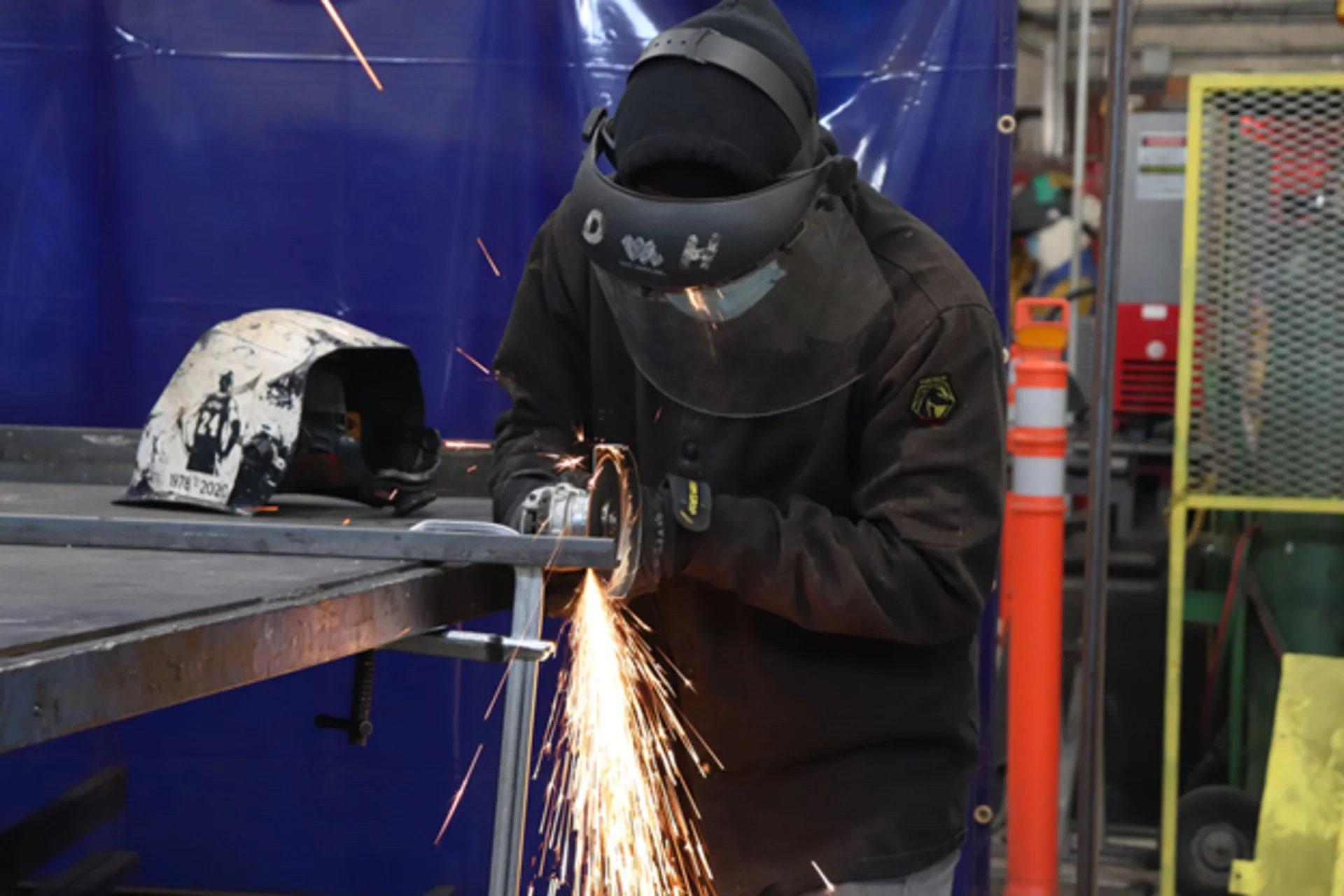If the necessary safeguards are not implemented, welding can be a hazardous job that can result in severe injury. There are dangers associated with welding, including radiation exposure, toxic gases, and electric shock, as well as the extreme heat generated during the operation. To protect themselves from these risks, welders must wear the proper welding safety gear.
Welding is a highly skilled trade that involves working with intense heat, sparks, and potentially hazardous materials. While it’s a vital part of many industries—from automotive to construction—it also comes with serious safety risks. That’s why having the right welding safety gear is essential for every welder. Whether you’re just starting a welding program or you’re an experienced professional, understanding and using proper gear can make all the difference in staying safe on the job.
A welding helmet, which protects the welder’s face, neck, and eyes, is an essential piece of safety equipment. The helmet must to be lightweight and pleasant to use for extended periods. For a snug and secure fit, the helmet’s headpiece has to be adjustable. The lens of the helmet should be constructed from a premium material that can effectively filter dangerous IR and UV radiation. Additionally, the lens must have a shade rating suitable for the type of welding being done.
Another crucial piece of welding program safety equipment that shields the welder’s hands from the extreme heat produced during the welding process is a pair of welding gloves. One of the most critical pieces of protective welding equipment is the welding helmet. A welding helmet shields your face, eyes, and neck from intense ultraviolet (UV) and infrared (IR) rays emitted during the welding process .The gloves must be constructed from a material resistant to flames and be thick enough to provide sufficient protection without hindering dexterity. The welder’s wrists should be covered by the gloves as well.

The chest, legs, and feet of the welder are all covered by this protective attire. The welder’s legs should be entirely covered by the apron, constructed of flame-resistant material. To guarantee a snug fit, the apron’s straps should be adjustable. Additionally, the apron needs pockets to store welding supplies. Foot protection is another often-overlooked aspect of welding safety. Steel-toe welding boots with non-slip soles are critical to protect feet from falling objects and slick surfaces.
This protective clothing covers the welder’s body and arms. The jacket should be able to withstand flames and be thick enough to offer sufficient protection without impeding mobility. For a snug fit, the coat should include adjustable cuffs and a waistline. Additionally, the jacket needs pockets to store welding tools.
In addition to helmets, welding gloves, jackets, and pants made from flame-resistant materials are essential to protect your skin from burns and sparks. A welding jacket should be thick enough to resist heat but flexible enough not to restrict movement. Welding pants and gloves should be well-fitted and made of materials like leather that provide both durability and protection.

The welder’s legs are covered with welding trousers, which are protective garments. The trousers should be constructed of a material that is resistant to flames and thick enough to offer suitable protection without restricting movement. To achieve a comfortable fit, the pants should also include adjustable waistlines and cuffs.
Welding boots are protective footwear that covers the welder’s feet and ankles. The boots should be heat-resistant and have a non-slip sole to prevent slipping on wet or oily surfaces in welding jobs. The boots should also have a steel toe cap to protect the welder’s toes from falling objects.
Welding produces toxic fumes and gases that can harm the welder’s respiratory system. Therefore, a respirator is a critical piece of safety gear that welders should wear. The respirator should be appropriate for the welding type and should be fitted to the welder’s face to ensure a secure seal. The respirator should also be compatible with other safety gear, such as the welding helmet.
Welding produces a loud noise that can damage the welder’s hearing over time. Welding earplugs are designed to protect the welder’s hearing from this noise. They should be made of comfortable materials that fit snugly in the ear canal and deliver adequate noise reduction.
Welding goggles are designed to protect the welder’s eyes from flying sparks and debris that can occur while welding. They should be made of durable materials that can withstand high temperatures and feature a shade level corresponding to the welding work being performed.
In conclusion, welding safety gear is crucial for protecting welders from the hazards associated with welding. Each piece of safety gear serves a specific purpose and should be selected accordingly based on the type of welding. Welders should always wear the proper safety gear and ensure that it is in good condition before starting any welding job.
using the right protective welding equipment is non-negotiable for anyone involved in welding. Investing in quality gear and following proven welding safety tips ensures that you can focus on your craft while minimizing the risk of injury.
If you’re enrolled in a professional welding program, these tools and welding safety tips will be part of your foundational training. Programs not only teach technical skills but also emphasise the importance of safety protocols and personal protective equipment.
Welding safety gear is essential for protecting welders from heat, sparks, toxic fumes, and other on-the-job hazards.
Read More